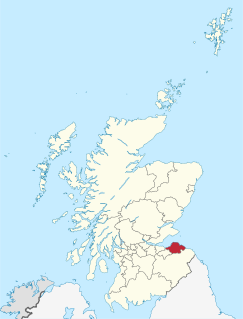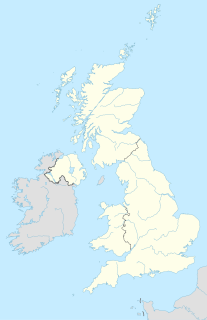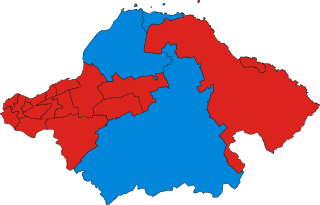Related Research Articles

East Lothian or is one of the 32 council areas of Scotland, a historic county, registration county and lieutenancy area. The county was also known as Haddingtonshire.

Cockenzie and Port Seton is a unified town in East Lothian, Scotland. It is on the coast of the Firth of Forth, four miles east of Musselburgh. The burgh of Cockenzie was created in 1591 by James VI of Scotland. Port Seton harbour was built by George Seton, 11th Lord Seton between 1655 and 1665.

Musselburgh is the largest settlement in East Lothian, Scotland, on the coast of the Firth of Forth, 6 miles (10 km) east of Edinburgh city centre. The population of Musselburgh is 21,900.

East Lothian is a constituency of the Scottish Parliament (Holyrood). It elects one Member of the Scottish Parliament (MSP) by the plurality method of election. Also, however, it is one of nine constituencies in the South Scotland electoral region, which elects seven additional members, in addition to nine constituency MSPs, to produce a form of proportional representation for the region as a whole.

Tranent is a town in East Lothian, in the south-east of Scotland. It is near the A1 road, 2 miles (3km) southeast of Prestonpans and about 9 miles (14 km) east of Edinburgh. It is one of the oldest towns in East Lothian, and built on a gentle slope, about 300 feet (90 m) above sea level. The population of the town is approximately 12,582, an increase of over 4,000 since 2001, making it the second most populated town in East Lothian after Musselburgh. Tranent was formerly a major mining town, but now serves as a commuter town for Edinburgh.
Brunstane is a northeastern suburb of the city of Edinburgh, Scotland. It lies on the A1 and is served by Brunstane railway station on the Borders Railway. Brunstane partly consists of new housing, such as the Gilberstoun estate, and also contains the 1950s council housing schemes known as Magdalene and the Christians, which are south and north of Milton Road respectively.

Edinburgh East and Musselburgh was a constituency of the Scottish Parliament (Holyrood). It elected one Member of the Scottish Parliament (MSP) by the plurality method of election. Also, however, it is one of nine constituencies in the Lothians electoral region, which elects seven additional members, in addition to nine constituency MSPs, to produce a form of proportional representation for the region as a whole.

The EH postcode area, also known as the Edinburgh postcode area, is a group of postcode districts around Armadale, Balerno, Bathgate, Bo'ness, Bonnyrigg, Broxburn, Currie, Dalkeith, Dunbar, East Linton, Edinburgh, Gorebridge, Gullane, Haddington, Heriot, Humbie, Innerleithen, Juniper Green, Kirkliston, Kirknewton, Lasswade, Linlithgow, Livingston, Loanhead, Longniddry, Musselburgh, Newbridge, North Berwick, Pathhead, Peebles, Penicuik, Prestonpans, Rosewell, Roslin, South Queensferry, Tranent, Walkerburn, West Calder and West Linton in Scotland.

Midlothian South, Tweeddale and Lauderdale is a constituency of the Scottish Parliament (Holyrood). Since the 2011 election, it has elected one Member of the Scottish Parliament (MSP) by the plurality method of election. Also, however, it is one of nine constituencies in the South Scotland electoral region, which elects seven additional members, in addition to nine constituency MSPs, to produce a form of proportional representation for the region as a whole.

Elections to East Lothian Council were held on 1 May 2003, the same day as the other Scottish local government elections and the Scottish Parliament general election.

Elections to East Lothian Council were held on 6 May 1999, the same day as the other Scottish local government elections and the Scottish Parliament general election.

Elections to East Lothian Council were held on 6 April 1995, the same day as the other Scottish local government elections.
Elections to East Lothian Council will be held on 4 May 2017 on the same day as the other Scottish local government elections. The election will consist of 6 wards electing three or four Councillors using the single transferable vote system a form of proportional representation, with 22 Councillors elected.
Elections for the East Lothian Council took place in May 1988, alongside elections to the councils of Scotland's various other districts.
Elections for East Lothian Council took place on Thursday 3 May 1984, alongside elections to the councils of Scotland's various other districts.
Elections for East Lothian Council took place in May 1980, alongside elections to the councils of Scotland's various other districts.
Elections for East Lothian Council took place in May 1977, alongside elections to the councils of Scotland's various other districts.
Elections for East Lothian Council took place in May 1974, alongside elections to the councils of Scotland's various other districts.